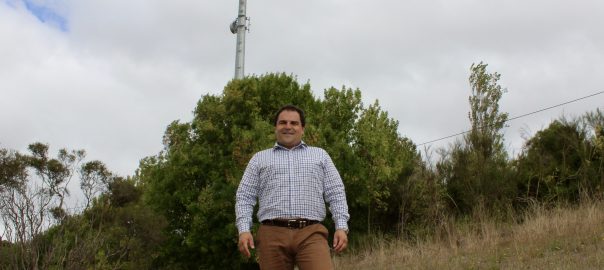IMPROVED MOBILE COVERAGE FOR BARKER

More Australians living in Barker will benefit from new and improved mobile coverage under Round 5 of the Morrison McCormack Government’s highly successful $380 million Mobile Black Spot Program.
Minister for Communications, Cyber Safety and the Arts, the Hon Paul Fletcher MP, Minister for Regional Health, Regional Communications and Local Government, the Hon Mark Coulton MP, and Federal member for Barker, Tony Pasin today announced Barker will receive 6 new base stations under Round 5, providing improved mobile coverage in the community.
“It’s fantastic news that communities in Barker will soon be benefitting from improved mobile connectivity provided by these six new base stations. I am particularly relieved that one of these additional towers will be built at Keilira, which sustained such extensive damage as a result of the bushfire earlier this year,” Mr Pasin said.
New base stations will also be built under this round of the program at Avenue Range, Legges Lane, Paruna, Peebinga and Wellington.
“Improved mobile coverage will help family and friends connect, access quality education and health services, do business and provide potentially lifesaving lifelines during emergencies such as bushfires,” said Mr Pasin.
This announcement continues our Government’s commitment to ensure people living and travelling through Barker continue to have improved mobile connectivity.
“Whilst there is always more work to do to address the many mobile phone blackspots across Barker this is a welcome step in the right direction,” said Mr Pasin
Minister Fletcher said Round 5 of the program will fund a further 182 new base stations for regional and remote communities across Australia.
“The announcement of successful Round 5 locations today brings the total number of base stations being funded under the Federal Government’s Mobile Black Spot Program to 1,229, underlining our ongoing commitment to providing new and improved mobile connectivity to Australians across the country.”
“Improved mobile connectivity makes it possible for Australians to stay connected, access education services, conduct business and remain in contact with family and friends. These activities are critical year-round, but particularly important with people responding to the COVID-19 crisis and spending more time at home,” said Minister Fletcher.
Minister Coulton said, “Our Mobile Black Spot program is connecting regional communities and businesses, enabling them to contribute more effectively to our local, regional and national economies.”
The Federal Government is contributing a total of $34 million to Round 5 of the Program, which will deliver total new investment of more than $73 million together with co-contributions from the funding recipients and state governments.
More than $836 million is being invested in new mobile infrastructure in regional and remote Australia across the five rounds.
This comes as the Mobile Black Spot Program passes a significant milestone with more than 800 mobile base stations now on air across Australia, meaning more coverage in more rural areas.
“More than 77 per cent of the 1047 base stations funded through the first four rounds of the Program are now complete taking us past the 800 mobile base station milestone. I thank Telstra, Optus and Vodafone for their work in getting us to this point, and importantly for their ongoing commitment to the Program,” Minister Fletcher said.
Round 5 base stations are scheduled to roll out in the coming months with the first new base stations expected to be activated by the end of the year.
To view the full list of Round 5 locations visit, or to provide feedback on the discussion paper on the design of future rounds, visit: communications.gov.au/mbsp
Additional information
Round 5A
The Government has allocated funding for all Round 5 proposals that offer value for money to taxpayers and meet the guidelines for the round. Of the $80 million made available, $34 million has been successfully allocated.
The Government intends that the next step in the Mobile Black Spots program will be to conduct a Round 5A, which will be used to test a range of different program designs. Funding for round 5A will be drawn from the unused portion of the funding allocated to Round 5.
The existing program design has served Australia very well. However, with each successive round, the base stations being funded are less economic for the mobile network operators. This fact, and the results from Round 5, suggest there may remain only a limited number of additional sites which are likely to be successfully funded if future rounds are held under the existing program design.
The discussion paper to consult on the different program designs which could be tested under the future Round 5A has been released today.
The paper proposes three main objectives for this round:
· To improve mobile connectivity along major transport corridors;
· To improve mobile connectivity in disaster-prone regions; and
· To test new technologies that support shared mobile coverage in regional areas.
A decision on the timing of Round 5A will be taken once responses to the discussion paper have been received and considered.








